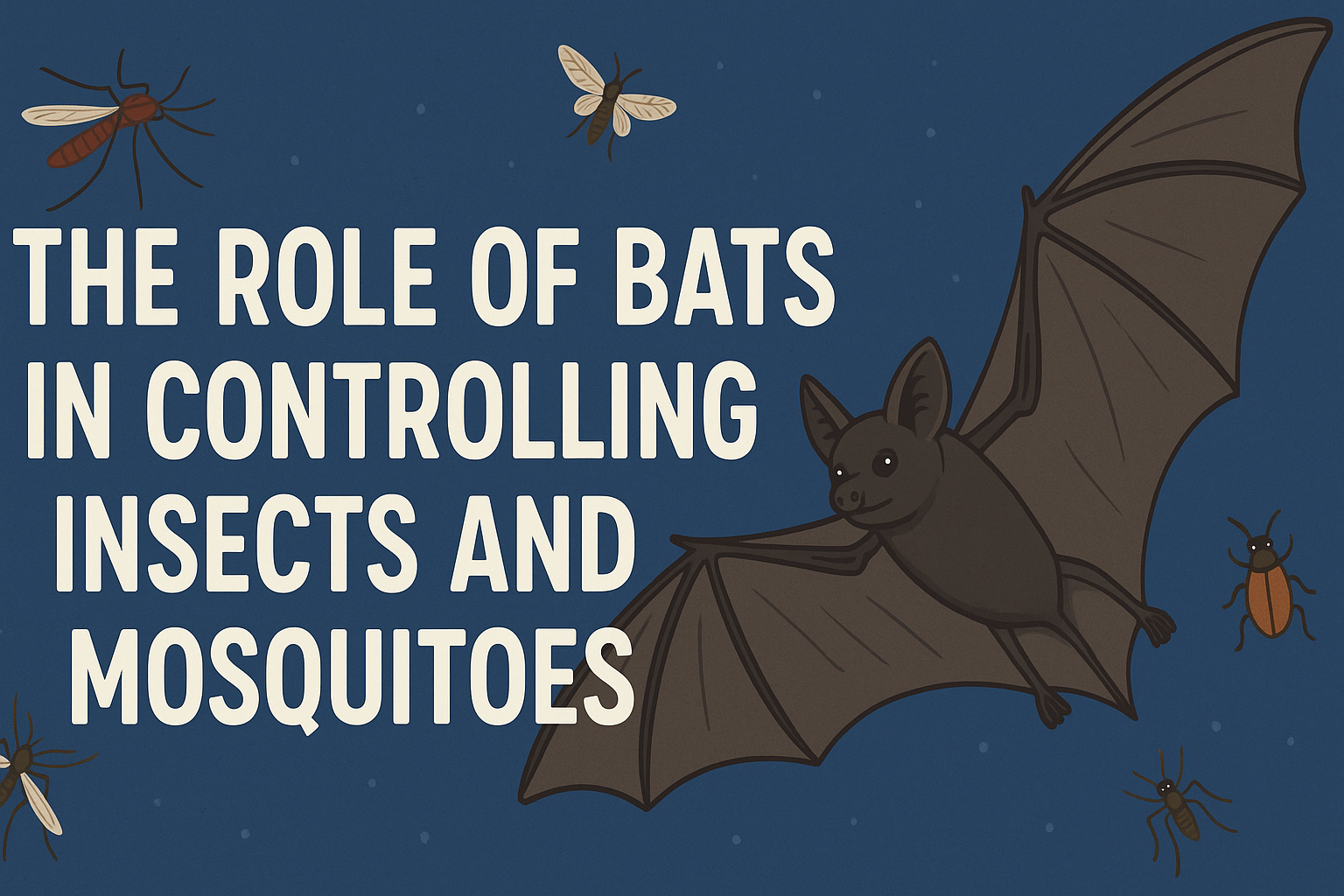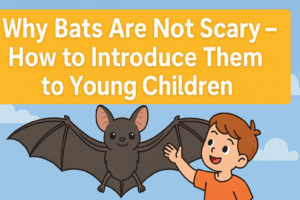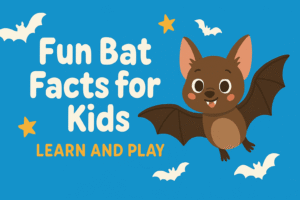Ever sat outside on a summer night, only to be eaten alive by mosquitoes? Yeah—me too. Nothing kills a backyard hang faster than swatting at your own face every 30 seconds.
But here’s something wild you might not know: bats are nature’s mosquito control squad, working the graveyard shift so you don’t have to.
No gimmicks. No chemicals. Just pure, 100% organic bug zapping, powered by echolocation and a serious appetite.
Let’s break it down—because when it comes to keeping the skies clear of pests, bats are lowkey heroes.
1. Bats Eat A Lot of Bugs—Like, A LOT
Let’s talk numbers for a second. A single little brown bat (one of the most common insect-eating bats in North America) can chow down on 600 to 1,000 mosquitoes or insects per hour. PER. HOUR.
And they don’t stop at just mosquitoes. Their menu includes:
- Moths (some that damage crops)
- Beetles
- Gnats
- Leafhoppers
- Flies
- Cucumber beetles (a major farm pest)
- Mosquitoes… because yes, they really like them
Multiply that by thousands of bats in a single colony and you’re looking at millions of bugs getting obliterated every night.
So while you’re dreaming of bug-free beaches, bats are out here working overtime.
2. Bats Protect Agriculture Too (a.k.a. They Save Your Snacks)
Okay, so bats help us avoid mosquito bites—great. But they also help feed us.
That’s right—bats play a HUGE role in agriculture, especially by controlling pests that damage crops. This means:
- Fewer crops lost to insects
- Less need for chemical pesticides
- Better harvests for fruits, grains, and veggies
In fact, scientists estimate that bats provide natural pest control services worth over $3 billion a year in the U.S. alone.
Farmers may not see them, but they definitely feel the impact—through fewer pests and healthier crops.
No bat?
More bugs.
More chemicals.
Higher food prices.
Less environmental balance.
It’s that simple.
3. Pesticide-Free Pest Control = Healthier Planet
Here’s the domino effect:
No bats ➡️ More bugs ➡️ More pesticides used ➡️ Harm to other pollinators, contaminated water, and potential health risks to humans.
When bats do their thing, they help reduce reliance on pesticides. That’s huge, because:
- Pesticides kill beneficial insects too (like bees and butterflies)
- They can contaminate soil and water
- Overuse leads to resistant bugs that are harder to kill
- Some can harm birds, pets, and even people
Bats are the eco-friendly bug zappers we didn’t know we needed. Their presence allows for a more balanced, natural ecosystem, where everything supports everything else—no chemicals required.
4. Science Confirms: Bats = Bug-Slaying Machines
Still skeptical? The science is clear.
A study from University of Wisconsin showed that bat exclusion from cornfields resulted in a massive increase in corn earworm larvae—costly pests that hurt yield and quality.
Another study in Texas showed that Brazilian free-tailed bats helped control populations of moths that destroy cotton crops, saving millions annually.
And it’s not just rural. Urban studies are showing that bats in city parks and green spaces are helping reduce populations of nuisance insects, too.
Science, meet bat.
Bat, meet your fans.
5. They Work While You Sleep
Bats are nocturnal, which means they’re out doing their thing at the exact time that other predators—like birds or lizards—are asleep.
This makes them a key piece of the 24/7 pest control cycle.
You’re snuggled in bed. Your dog is snoring. The lights are out. But out in the yard or over the treetops, bats are diving, twisting, and echolocating their way through clouds of insects.
They’re not just keeping pests in check—they’re giving us a better quality of life without us even noticing.
6. What Happens If Bats Disappear?
Let’s play out the scary scenario for a sec.
No bats =
- Exploding insect populations
- More bites, more bug-borne diseases
- More pesticides
- Biodiversity
- Crop yields
- Balance in nature
Mosquitoes could carry more diseases like West Nile virus, Zika, or malaria. Crop pests would surge. And the delicate balance of ecosystems would break down fast.
Bats are like the Jenga block holding the whole thing up. Pull it out, and… well, the stack crashes.
7. How You Can Help Bats Help You
Now that we’re all big bat fans (and hopefully a little bug-paranoid), here’s how you can support them:
Build a Bat House
Seriously, it’s easier than you think. You can buy one or build it DIY-style and hang it high on a garage, barn, or pole.
Make sure it gets lots of sun and is safe from predators.
Reduce Pesticide Use
The more bugs bats can eat, the better for everyone. Give them a buffet.
Provide Water
Like any hardworking creature, bats need to hydrate. A small pond, birdbath, or even a dish of water can help.
Go Light on the Lights
Too much artificial light confuses bats. Keep things dim at night or use motion-activated lighting.
Spread the Word
Bats get a bad rap thanks to myths, horror movies, and misinformation. Be the person who educates others and clears up the confusion.
TL;DR – Bats vs. Bugs Recap:
| Bat Benefit | Impact |
|---|---|
| Eats insects (esp. mosquitoes) | Reduces bites, lowers disease risk |
| Controls crop pests | Boosts farm yields, saves billions |
| Replaces pesticides | Cuts down on chemicals and pollution |
| Active at night | Fills the pest control gap when birds are asleep |
| Helps humans and nature | Win-win for health, food, and the environment |
Final Thoughts: Bats Deserve Better PR
They’re not creepy.
They’re not dangerous.
They’re not just Halloween mascots.
They’re hard-working, underappreciated pest-control pros who make our lives easier, cleaner, and healthier every single night.
So next time you swat a mosquito, say a little thank-you to the bats you didn’t see but were definitely out there, hunting bugs in the dark.
Because without bats, the bugs win.
Got a question about backyard bats? Want to build a bat house or know where to spot them in Ohio? Drop a comment—I’m all ears (just like a bat).




